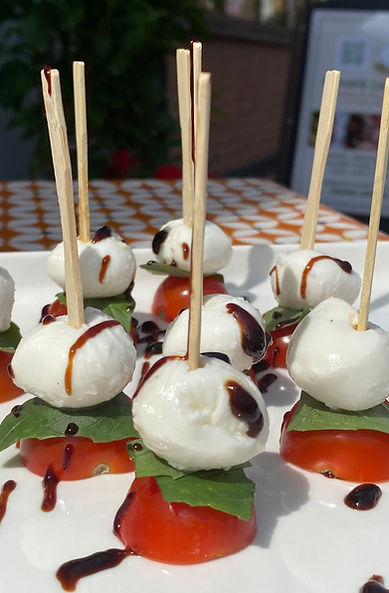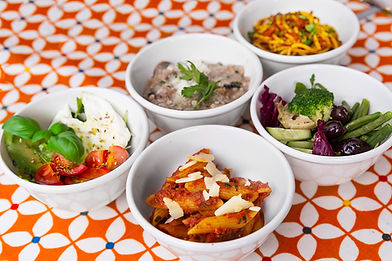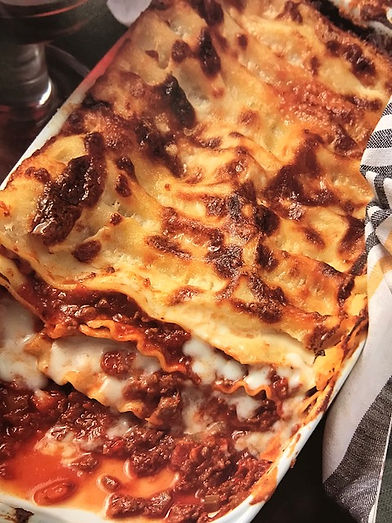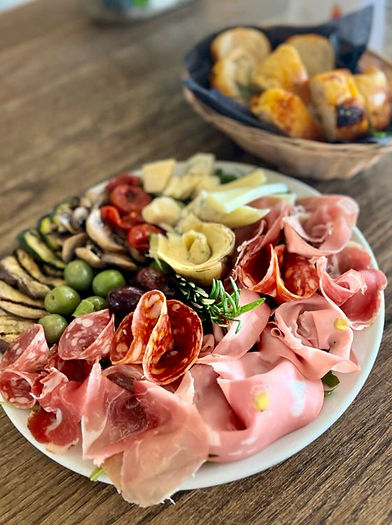
TYPES OF CATERING
CANAPÉ STYLE CATERING
The canapés are usually one- or two-bite portions and can be a combination of hot and cold options. They can be served by waiters or stationary for guests to help themselves. This event style is a good choice for people wanting a more casual atmosphere and for their guests to really mingle and meet each other. A guide is 4/6 canapés per guest per hour.
Pros: If your venue is small this type of set up allows you to have more people since you won't need dinner tables and chairs for every guest. They're also typically shorter than a sit-down meal, and they allow you and your guests to easily circulate throughout the room and chat with everyone.
Cons: Many people ask why canapés always seem so expensive for such a small thing. This is true, but it comes down to the amount of time it takes to create them, and the variety of ingredients involved. Your guests will likely drink more than at a sit down event, so your alcohol costs might go up. Hot canapés often need to heated at the event so if you don't have an oven this needs to be hired.


BOWL FOOD CATERING
Bowl food catering is "mini meal" in a bowl and an increasingly popular choice for guests hosting networking events and drinks receptions. ... Bowl food dishes can be sweet or savoury and offer a more substantial alternative to canapés that still enables guests to mingle and network without being pinned to a particular seat. They are small enough to be held by guests and eaten with a fork or spoon. You can have at least 3/4 bowls per guest depending on the length of your event and anything up to 10 or more.
BUFFET STYLE CATERING
Food stations are set up on long tables where guests can walk along and serve themselves. Another option is to have servers stationed behind the buffet table serving each dish. A buffet-style event is usually considered the most casual style of meal service.
Pros: Fewer servers are needed with a buffet reception, which means you may save some money on your catering-staff charges (though you still need staffer to tend to the buffet, and waiters to provide water and wine to the tables). Buffets make it easier and more cost-effective to provide guests with a variety of choices, which is helpful since many people have so many types of allergies and dietary restrictions. This service style also promotes mingling and interacting among guests.
Cons: Since each table will have to wait their turn to head to the buffet, it may take a while for all guests to receive their food; queues may also form. You also might have to rent linens, chaffing dishes, and serving pieces. Guests may have to serve themselves and carry their own plates, which may not be as elegant as you would like. Buffets also require larger quantities of food since people tend to eat more when they serve themselves, which will add to your food costs.


PLATED MEAL CATERING
A plated, sit-down dinner is considered the most traditional and formal option as each guest is individually served a plated meal. Typically, guests are served three courses: starter, main course and dessert. We will usually give guests a choice of two (or three) main dishes which they select beforehand.
Pros: Everyone at the table gets their food at the same time. Also, we will know exactly how much food to purchase since each meal is pre-selected, so your food costs will be lower than a buffet or family-style meal. You can spread out activities (like dances and toasts) in between each course to keep guests engaged and maintain a nice energy throughout the meal service.
Cons: A sit-down meal requires more servers, both due to the plating in the kitchen and to serve the meal to guests. So the staffing portion of your catering bill will be higher. Also, the food options are limited to what you picked, so if you have a lot of picky eaters in attendance, there's a chance they may not eat everything on their plate.
HOW IT WORKS
Once you've decided on the type of catering you'd like for your event, we then have the following options:
FULL CATERING
We offer both full and partial catering services.
Our team can arrive at your home or chosen venue with beautifully prepared dishes, setting everything up and displaying the food for you.
Or if you prefer, we can also stay to serve your guests and take care of the clean-up, so you can simply relax and enjoy your event, stress-free.
Our catering team is dedicated, professional, and always ready to make your event feel truly special.
DELIVERY ONLY
With delivery the food and let you handle everything else. Everything arrives in disposable platters, and you take care of the food presentation.
We can loan our platters and dishes for your food display for a returnable deposit. We can also hire glasses, plates, and cutlery.
We may charge a collection fee for picking up the equipment after your event is over.
